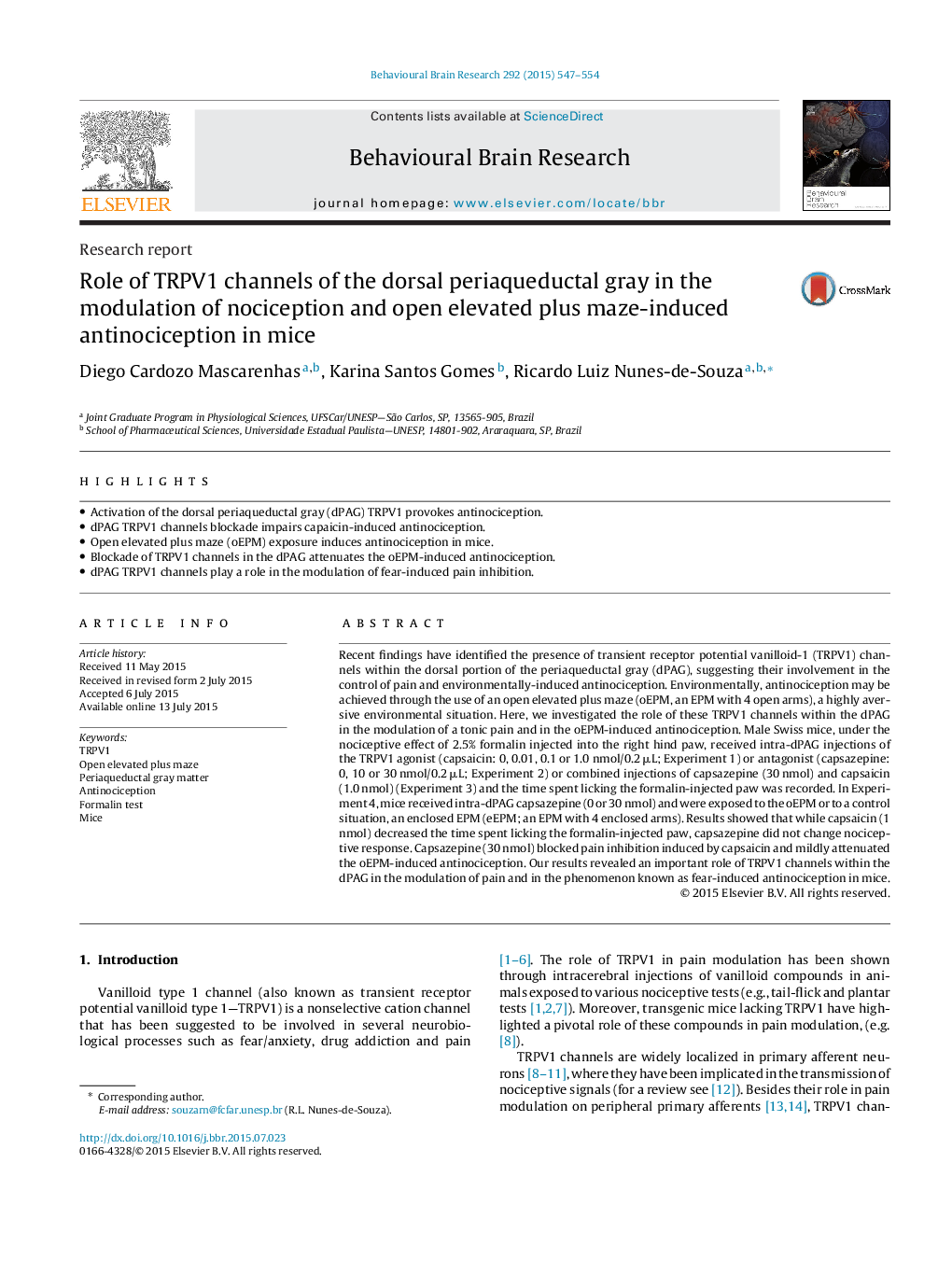| کد مقاله | کد نشریه | سال انتشار | مقاله انگلیسی | نسخه تمام متن |
|---|---|---|---|---|
| 6256561 | 1612940 | 2015 | 8 صفحه PDF | دانلود رایگان |

- Activation of the dorsal periaqueductal gray (dPAG) TRPV1 provokes antinociception.
- dPAG TRPV1 channels blockade impairs capaicin-induced antinociception.
- Open elevated plus maze (oEPM) exposure induces antinociception in mice.
- Blockade of TRPV1 channels in the dPAG attenuates the oEPM-induced antinociception.
- dPAG TRPV1 channels play a role in the modulation of fear-induced pain inhibition.
Recent findings have identified the presence of transient receptor potential vanilloid-1 (TRPV1) channels within the dorsal portion of the periaqueductal gray (dPAG), suggesting their involvement in the control of pain and environmentally-induced antinociception. Environmentally, antinociception may be achieved through the use of an open elevated plus maze (oEPM, an EPM with 4 open arms), a highly aversive environmental situation. Here, we investigated the role of these TRPV1 channels within the dPAG in the modulation of a tonic pain and in the oEPM-induced antinociception. Male Swiss mice, under the nociceptive effect of 2.5% formalin injected into the right hind paw, received intra-dPAG injections of the TRPV1 agonist (capsaicin: 0, 0.01, 0.1 or 1.0 nmol/0.2 μL; Experiment 1) or antagonist (capsazepine: 0, 10 or 30 nmol/0.2 μL; Experiment 2) or combined injections of capsazepine (30 nmol) and capsaicin (1.0 nmol) (Experiment 3) and the time spent licking the formalin-injected paw was recorded. In Experiment 4, mice received intra-dPAG capsazepine (0 or 30 nmol) and were exposed to the oEPM or to a control situation, an enclosed EPM (eEPM; an EPM with 4 enclosed arms). Results showed that while capsaicin (1 nmol) decreased the time spent licking the formalin-injected paw, capsazepine did not change nociceptive response. Capsazepine (30 nmol) blocked pain inhibition induced by capsaicin and mildly attenuated the oEPM-induced antinociception. Our results revealed an important role of TRPV1 channels within the dPAG in the modulation of pain and in the phenomenon known as fear-induced antinociception in mice.
Journal: Behavioural Brain Research - Volume 292, 1 October 2015, Pages 547-554